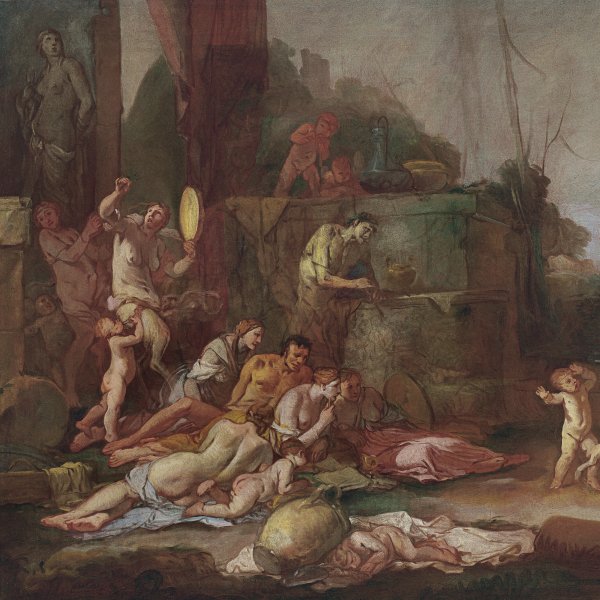Giulio Carpioni
Giulio Carpioni was born in 1613, probably in Venice. He is first documented in 1630, the date when he began his training as a painter in the workshop of Alessandro Varotari, known as Il Padovanino. From the outset his style reveals a quest for realism an objectivity in the manner of Saraceni, Jean Leclerc and other Venetians, and interest that probably resulted from his trip to Bergamo in 1631 in the company of his teacher and where he became familiar with Lombard painting. Carpioni’s first documented works, The Glorification (Museo Civico, Vicenza), and The Martyrdom of Saint Catherine (Vicenza) date from 1647 and 1648. His work also reveals the influence of the bamboccianti, in particular Pietro Vecchia.
From 1638 he is documented in Vicenza, the city in which he permanently settled and Carpioni was influenced by the colourful, elegant style of Francesco Maffei that prevailed there. Together they collaborated on the decoration of the Zitelle and San Nicola oratorios, also in Vicenza. Following Maffei’s departure from the city in 1657, Carpioni embarked on his most productive phase. Over the following decades he produced numerous religious compositions, among them the paintings for the Oratorio of Santa Clara, the Palazzo Trissino Baston and an important cycle for SS. Filippo e Fortunato. His most original works are undoubtedly his small-format paintings on mythological themes such as bacchanals, notably The Triumph of Silenus (Gallerie dell’Accademia, Venice), and The Kingdom of Hypnos (Kunsthistorisches Museum, Vienna).
Between 1669 and 1673 Carpioni is documented in Verona in the company of the painter Bartolomeo Cittadela. During his time in that city he executed various religious works for the churches of San Leonardo and SS. Nazaro e Celso. In his last years Carpioni also produced prints.




